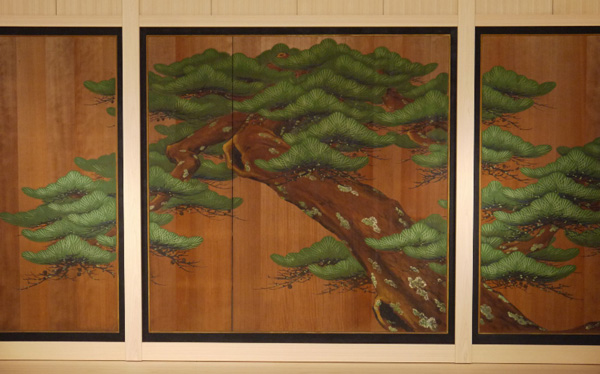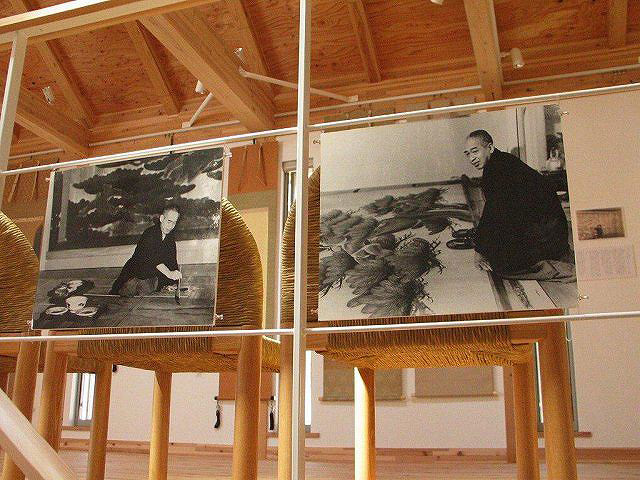Prints in Collection
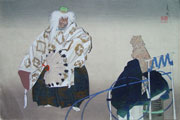 | IHL Cat. #708 | Nōga taikan, Semimaru 1930 IHL Cat. #962 |
| Shōjō from the album Nō Sugata, 1931-1934 IHL Cat. #1600 | Yoroboshi from the album Nō Sugata, 1931-1934 IHL Cat. #1596 | IHL Cat. #1597 |
| Kumasaka from the album Nō Sugata, 1931-1934 IHL Cat. #1593 | IHL Cat. #1598 | IHL Cat. #1599 |
| IHL Cat. #1592 | IHL Cat. #1594 | IHL Cat. #1595 |
Reprinted with the kind permission of the author, Richard J. Smethhurst,
Professor Emeritus, University of Pittsburgh
Matsuno Sôfû was born in 1899 in Shitaya in working class Tokyo, only a few miles to the north of Kôgyo’s [Tsukioka Kōgyo (1869-1927)] birthplace in Nihonbashi. At age twelve, while a first year middle school student, Sôfû began the study of painting with Odake Kokkan, a wellknown painter of historical subjects. Two years later in 1914, he dropped out of school to apprentice with Kôgyo. In 1915, Sôfû entered his first painting, of the nô play Hagoromo, in a competition, and in 1916, his painting of the fourteenth century warrior Nitta Yoshisada won him, while still a teenager, his first prize in a painting exhibition. In 1920, shortly after the end of World War I, Sôfû was drafted into the military and served in the elite First Konoe Infantry Regiment, stationed near the Imperial Palace in Tokyo. After leaving the army in 1921, Sôfû began, with recommendations from the artists Yamazaki Gakudo and Sakamoto Setchô, to publish nô pictures seriously and received positive reviews. He also produced woodblock prints. In the late 1920s, after Kôgyo’s death, for example, Sôfû created 27 woodblock prints to complete Kôgyo’s Nôga taikan.
Sôfû was involved in a major twentieth century innovation in nô texts. In 1929, he drew the illustrations for the Kanze School’s Kanze-ryû Shôwaban, nô play texts published by the Kanze School of nô. In 1937, with the publication of the Kanze-ryû Taiseiban Utaibon, Kanze Sakon, the head of the Kanze School, and Sôfû revolutionized nô texts by introducing line-drawing illustrations onto the pages of the texts.
Between the penultimate year of World War II in 1944 and Sôfû’s death in 1963, he actively created nô paintings and prints. Unfortunately, there is no catalogue of Sôfû’s oeuvre, although the Matsuno Geibunkan, a small museum dedicated to his work in Yotsukaidô in Chiba Prefecture, has a collection of his paintings and prints. In 1944, Sôfû provided illustrations for a republication of Noel Peri’s classic Le Nô.
Sôfû’s sketches and line-drawings also appear in the three volumes of English-language nô translations published in 1955-60 by the Nippon Gakujutsu Shinkôkai. In 1983, a committee headed by Itô Tatsuo selected one hundred prints (eighty-nine by Kôgyo and eleven by Sôfû) from the joint 1927 series, and republished them as Nôgaku meisaku hyakusen ("A Selection of One Hundred Nô Masterpieces".) The heads of all five nô schools approved the publication and their names appear on the title page.
Sôfû not only produced paintings and prints of nô subjects, but also in 1927 he painted his first of what would be a number of pine tree backdrops for nô stages: this first was in a private home of a former high-ranking retainer of the daimyô of Sendai, and ironically done in the same year that his mentor Kôgyô died of lead poisoning while painting a pine tree backdrop on a stage in the city of Utsunomiya. After World War II, Sôfû painted the pine and bamboo trees on the back of stages at Hakusan Shrine, the Shintô affiliate of Chûsonji Temple at Hiraizumi in Iwate Prefecture, at the Yamamoto nô stage in Osaka, the Kawamura nô stage in Kyoto, and a temple in Kameoka. In December 1958, Sôfû suffered a stroke while painting a pine backdrop for a stage in Osaka—he recovered, but died of another stroke four years later.
小島能舞台鏡板(松野奏風 筆)
Photos hanging at the Matsuno Geibunkan of the artist at work.
My notes:
It is unclear whether the playwright Matsuno Sōfū, credited with writing the WWII-era kyogen play Treasure Island (Takara no Shima), is one-in-the-same with this artist.
The website of Scripps College Ruth Chandler Williamson Gallery2 displays three additional series of prints by the artist, Noh Plays (c. 1950-60), Noh Twelve Months and Twelve Months of Noh Pictures c. 1960, jointly designed with his son Matsuno Hideyo (1936-2002) and published by Unsodo Publishing. Ritsumeikan University Art Research Center displays all fifty prints from the series 能姿五十彩 (Fifty Noh Figures in Color) published by 謡曲界発行所 (Yōkyoku-kai Hakkōsho).
The website of Scripps College Ruth Chandler Williamson Gallery2 displays three additional series of prints by the artist, Noh Plays (c. 1950-60), Noh Twelve Months and Twelve Months of Noh Pictures c. 1960, jointly designed with his son Matsuno Hideyo (1936-2002) and published by Unsodo Publishing. Ritsumeikan University Art Research Center displays all fifty prints from the series 能姿五十彩 (Fifty Noh Figures in Color) published by 謡曲界発行所 (Yōkyoku-kai Hakkōsho).
As to Matsuno's work for the series Nōga taikan, the preface to the album in which his prints appear states that he "was drawn to the school of Kōgyo since his boyhood, and it was only natural that he focused increasingly on Nō pictures. When his master's series of 200 woodblock prints was left unfinished, he contributed over twenty prints to complete the project."3
Artist's Signature and Seal Examples
1Helen Merritt in her article ”Woodblock Prints of the Meiji Era” p. 251, appearing in The Hotei Encyclopedia of Japanese Woodblock Prints, Amy Reigle Newland, Hotei Publishing Company, 2005, gives the artist's birth and death years as (1885-1949) but she is likely confusing this artist with the painter Nagano Sōfū (1885-1949).
2 Website of Scripps College Ruth Chandler Williamson Gallery http://web-kiosk.scrippscollege.edu/4DACTION/HANDLECGI/CTN3?sid=1695?display=por
3 The Beauty of Silence: Nō and Nature Prints by Tsukioka Kōgyo (1869-1927), Robert Schaap & J. Thomas Rimer, Hotei Publishing, 2010, p. 44.
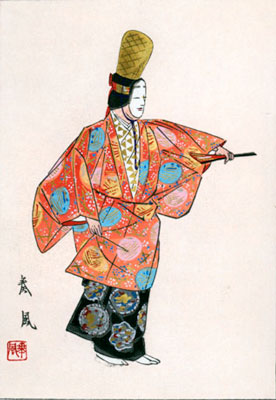 Noh Plays, c. 1950-60 ink on paper 7 1/8 x 4 7/8 in. Scripps College Ruth Chandler Williamson Gallery Accession No. 2001.1.123 | 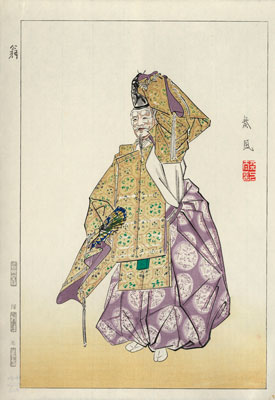 Okina (January), c. 1960 14 3/8 x 9 1/2 in. Scripps College Ruth Chandler Williamson Gallery Accession No. 2006.1.47 | 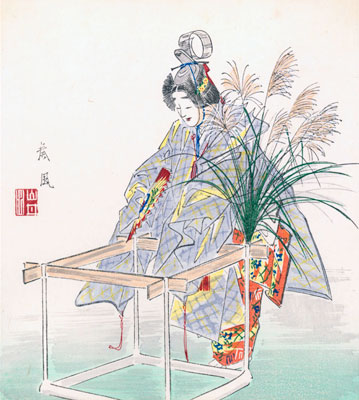 Noh Twelve Months: Izutsu, 1956 10 13/16 x 9 3/8 in. Scripps College Ruth Chandler Williamson Gallery Accession No. 2007.1.109 |
Artist's Signature and Seal Examples
 奏風 Sōfū | 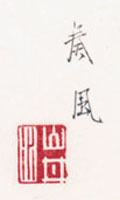 with unread seal |  |  奏 Sō with unread seal |  奏 Sō with unread seal | 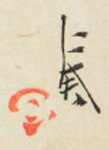 奏 Sō with likely Sō seal |
1Helen Merritt in her article ”Woodblock Prints of the Meiji Era” p. 251, appearing in The Hotei Encyclopedia of Japanese Woodblock Prints, Amy Reigle Newland, Hotei Publishing Company, 2005, gives the artist's birth and death years as (1885-1949) but she is likely confusing this artist with the painter Nagano Sōfū (1885-1949).
2 Website of Scripps College Ruth Chandler Williamson Gallery http://web-kiosk.scrippscollege.edu/4DACTION/HANDLECGI/CTN3?sid=1695?display=por
3 The Beauty of Silence: Nō and Nature Prints by Tsukioka Kōgyo (1869-1927), Robert Schaap & J. Thomas Rimer, Hotei Publishing, 2010, p. 44.
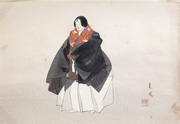
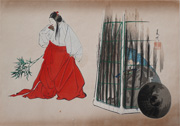
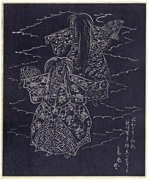
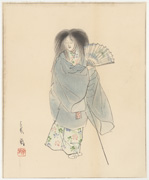
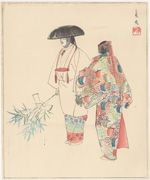
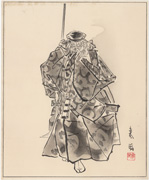
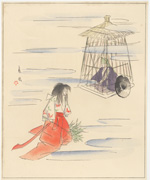
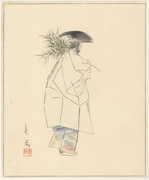
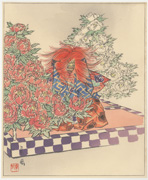
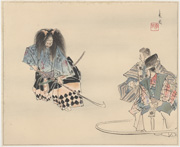
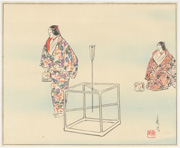




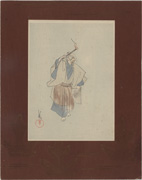
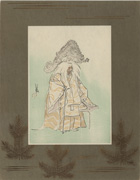
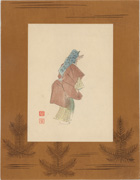
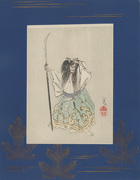
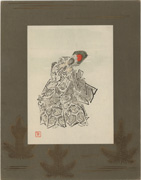
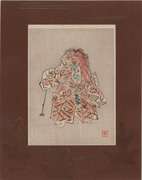
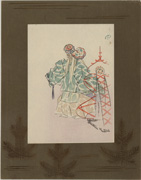
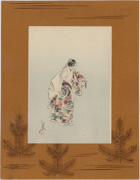
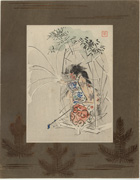
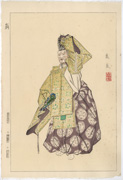
 ihl1881 thumb web.jpg)
 ihl1884 thumb web.jpg)
 ihl1883 thumb web.jpg)
 ihl1882 thumb web.jpg)
 ihl1931 thumb web.jpg)
